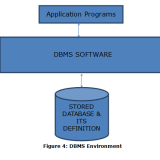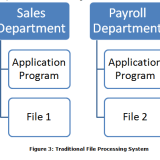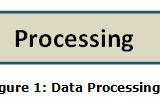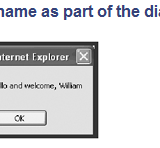Home »
Archive by category "Online Computer Education" (Page 9)
Advantages of using DBMS approach The need of DBMS itself explains the advantages of using a DBMS. Following are the advantages of using a DBMS: 1. Reduction of redundancies – Data in a DBMS is more concise because of the central repository of data. All the data that is accessed is stored at one place. There is no repetition of the same data. This also reduces the cost of storing...
Continue reading »
December 11, 2015 evirtualguru_ajaygourOnline Computer EducationNo Comment
Characteristics of Database Management Systems The main characteristics of a DBMS are as follows: 1. Self-describing nature of a database system – DBMS contains not only the database but also the description of the data that it stores. This description of data is called as meta-data. Meta-data is stored in a database catalogue or data dictionary. It contains the structure of the data and also the constraints that are imposed...
Continue reading »
December 11, 2015 evirtualguru_ajaygourOnline Computer EducationNo Comment
Database Management System (DBMS) A database management system is a collection of programs that enables users to create, maintain and use a database.It can be viewed as a repository of data that is defined once and then accessed by different users as per their requirements. In the Database approach,there is a single repository of data which is accessed by all the application programs as shown in the example below: The...
Continue reading »
December 11, 2015 evirtualguru_ajaygourOnline Computer EducationNo Comment
Need for a Database In Traditional file processing, data is stored in the form of files. A number of application programs are written by programmer’s to insert, delete, modifyand retrieve data from these files. New application programs will be added to the system as the need arises. For example, consider the Sales and Payroll departments of a company. One user will maintain information about all the salespersons in the Sales...
Continue reading »
December 11, 2015 evirtualguru_ajaygourOnline Computer EducationNo Comment
Introduction Data is a collection of raw facts which have not been processed to reveal its meaning. For example, test marks of every student in a school. Information is produced by processing data as shown in Figure1. For example, given the data of the test marks of all the students in a class, the average marks of all the students and the maximum and minimum marks in the class can...
Continue reading »
December 11, 2015 evirtualguru_ajaygourOnline Computer EducationNo Comment
A function is a collection of statements that performs a given task. Most functions are defined in the head section of HTML pages. Putting your functions in the head section is a good idea for two reasons: The first is that you’ll always know where your functions are because they’re in a common location. The second reason is that the head section always executes first, ensuring that functions are available when...
Continue reading »
October 16, 2015 evirtualguru_ajaygourOnline Computer EducationNo Comment
As I have already stated, JavaScript and JScript enable you to create scripts that work with objects. You can think of objects as being similar to variables except that objects can contain multiple values known as its properties. Objects also can contain built-in functions, which are collections of predefined script statements that are designed to work with the object and its data. Examples of browser objects include browser windows and form...
Continue reading »
October 16, 2015 evirtualguru_ajaygourOnline Computer EducationNo Comment
The break statement lets you terminate a label, switch, or loop. The script then continues processing with the statement that follows the label, switch, or loop statement that was broken out of. The following example shows how to use the break statement to terminate the execution of a while loop. In this case, the break statement terminates the loop when the value of counter becomes equal to 5. Because...
Continue reading »
October 16, 2015 evirtualguru_ajaygourOnline Computer EducationNo Comment
Page 9 of 13« Prev
1
…
6
7
8
9
10
11
12
13
Next »



























